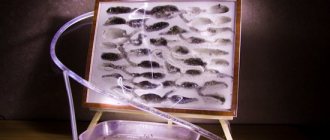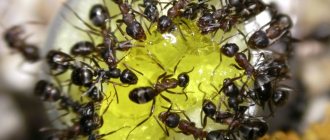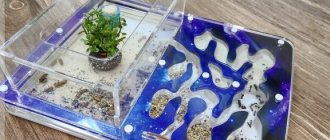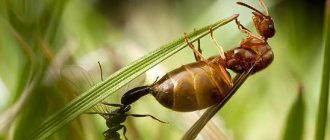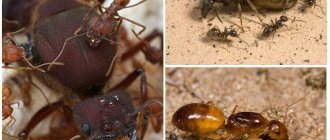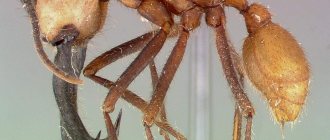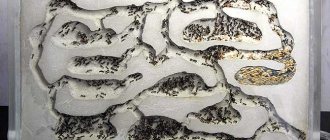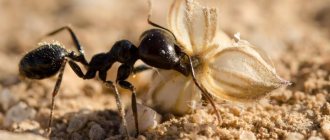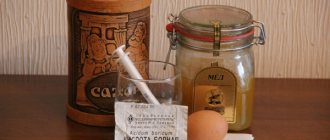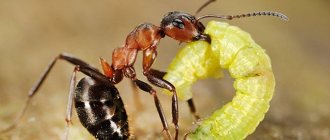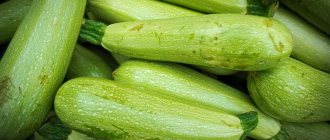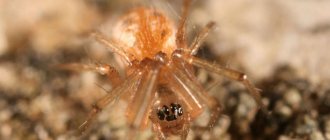Adequate nutrition is the key to the harmony and well-being of an ant colony. The diet of little gourmets in nature is very diverse. Thousands of flowers and plants share seeds, sap and pollen with them. Lots of insects crawl, run and fly around, some of which become a tasty and healthy lunch. The natural habitat is a real supermarket of healthy products.
By exploring the culinary preferences of small wild inhabitants, you can understand what to feed ants at home. Proteins, carbohydrates and microelements are the basis of a balanced diet. Portion size, like with humans, also matters. Also, each species has its own favorite food preferences - traditional national dishes.
How to feed ants at home
In keeping domestic ants, their food is of utmost importance. Let's look at the issue of feeding domestic ants using the example of harvester ants. This is the most popular type of ant for formicariums, ideal for children. Characteristics: reapers are peace-loving, calm, beautiful.
The Latin name Messor Structor translates as “reaper ant.” They got their name from the fact that they collect grains grown by people from the fields. But no one ever called them thieves or pests. Reapers collect only waste - grains that have fallen to the ground from holey spikelets. Under natural conditions, messoras eat the seeds of a wide variety of plants, but prefer grains of wheat, poppy, and sunflower.
The large jaws of threatening-looking soldier ants are actually created by nature to bite through hard grains, and not as a weapon for attack. The mandibles close tightly, which helps transfer grains to the anthill.
First, the grain is chewed by soldier ants. Then the worker ants take over. Pieces of grains are ground into flour. After wetting with saliva, they turn into a pulp, which is fed to the larvae and the queen.
Proteins fats carbohydrates
It is into such groups that most food products, not only of the human, but of the ant world, can be divided. What is worth remembering right away: under no circumstances should you give any fats or carbohydrates in their pure form to ants - they are guaranteed to lead to the death of the insects.
We have collected the types of food that can be given to reapers in a table:
| Protein food | Fruits |
| Boiled egg | Apple |
| Boiled fish | Pear |
| Boiled chicken | Banana |
| Gammarus | Grapes (with caution) |
| Feeding insects | A pineapple |
Strictly prohibited:
spicy, fatty, syrups.
The type of insect certainly influences the formation of the diet. Messor structor, as befits reapers, love grains and seeds. But they can eat a boiled egg if they are in the mood, although standard food is more than enough for them.
Any syrups and sweets are strictly prohibited. You can diversify the diet with food for canaries or gammarus (dried crustaceans for aquarium fish), these are proven options.
Important:
All types of ants need crushed insects to maintain vitality. When giving insects, make sure that they cannot harm the colony and are proportionate to the number of eaters.
Please note: you cannot bring indoor or outdoor insects into the arena; they can become a source of infections, contain insect poison in doses sufficient to kill the colony, as well as micromites that can destroy the anthill. It is better to purchase insects in special stores.
Messor structor syrup should absolutely not be given; they get the carbohydrates they need for life from grains.
Watch the video of harvester ants feeding, as well as their reaction to ice and artificial snow in the arena:
What to feed ants in an ant colony?
The “5 Ants” online store supplies formicariums complete with a ready-made set of basic food, which includes different types of grains. It will last for about a year.
What to feed an ant colony? To feed the harvester ants, a teaspoon of the grain mixture is poured into the arena. You don’t need to do anything else: smart ants will deal with every grain themselves. The good ones will be taken to the pantry, some will be eaten right away, and the bad ones will be thrown into a landfill. If there is still a lot of food in the test tube, then there is no need to pour out additional food until the reserves are reduced.
How to get and where to get ants for a formicarium?
Reaper ants or steppe ants are one of the easiest species to keep for beginners. At the head of such a colony is a queen, which lays eggs and contributes to the growth of the family.
How to get and where to get ants for a formicarium:
- Buy a small colony, which is sold in small tubes. Typically this is a queen along with 10, 20 or 30 workers.
- If you are not ready to spend money on purchasing a colony, you can do the following. In nature, females and males mate in spring. These ants, unlike the usual ones, have wings. Later, after fertilization, the queen gnaws off her wings, descends underground, or climbs under a stone or dry tree. There the process of digging holes and laying eggs begins. During the mating period, it is necessary to get out into the steppe and look for similar insects with wings. Fertilization of the uterus occurs only once in a lifetime; it works with the accumulated sperm capacity, laying eggs. Some time after fertilization, the males die. Next, the queen begins laying eggs.
- As soon as you have a queen, you need to transplant it into a test tube with moistened cotton wool, and place there a small piece of walnut, the size of a match head, and a few dead mosquitoes. This is because ants in nature also eat dead insects to provide themselves with protein.
The most remarkable thing is that the whole family consists of females, males, and workers. Workers are females, but with underdeveloped reproductive organs that cannot produce offspring. They are the ones who do the cleaning, some are nannies, and feed the offspring. In such a family there are individuals who carry out cleaning, carry dead insects and debris to a designated place so as not to clog the formicarium or nest. It is worth noting that entomologists consider ants to be the most developed of all insects. It is believed that an anthill is a single whole organism, each of which has its own purpose and purpose. The work is distributed, everyone knows what to do. The queen lays eggs, other insects feed them, another caste cleans and protects the anthill from attack by other insects.
Murashka
Special feed
Beginning myrmikers should take note: there is no special food for ants. The feeding habits of the reapers were shaped by steppe vegetation. They can be called vegetarians, since their main food is plant seeds and wheat grains. Domestic reapers happily eat poppy seeds, millet, pumpkin seeds, mustard seeds, and clover.
Proteins are the building material for the body of ants, and carbohydrates are the source of energy for their life. The grains contain both. With a balanced selection, the ants get enough protein, since the seed contains it even in larger quantities than meat. For example, mustard seeds contain 30 g of protein per 100 g, and chicken seeds contain 24 g per 100 g. Thus, meat is not a necessary product for reapers, although they will not refuse boiled chicken. The difference in vegetable and animal protein matters for for humans, but not for ants.
Can ants live without a queen?
Despite the fact that harvester ants are the easiest to care for, significant problems can arise when introducing a new queen.
Can ants live without a queen?
- Yes, but there will be no new family members, and the inhabitants of the colony will simply live out the life that is intended for them. If you want the family to develop, a womb is a must.
- On average, the queen lives from 5 to 25 years, depending on the type and the quality of care for it. There are individuals that live up to 28 years.
Insect
Is it possible to feed ants human food?
You definitely shouldn't feed ants human food if it means cooked food. Salads, meatballs, kebabs, etc. are strictly contraindicated for ants. Sauces can be deadly for them.
Yes, if we are talking about fresh juicy fruits. They can be safely included in the diet. Reapers will be happy to taste a piece of melon, watermelon, pear, or peach. You need to be careful with citrus fruits: give them a try and observe the reaction. Ants also love to eat a piece of dried apple. The fruit pieces should be finely chopped or larger than the entrance. However, remember that fresh food must be removed after 6-12 hours before it spoils.
Syrups and sweet fruits
Ants have a real sweet tooth. In nature, they feast on flower nectar, carbohydrate-containing plant sap, and aphids. The latter is like a cow to them. Only what they get from it is not milk, but a sweet solution (honeydew).
In a formicarium, the ant economy, of course, will not be able to develop like this. Therefore, it is the owners’ task to deliver treats. You can use sugar or honey syrups, or glucose purchased at the pharmacy.
Important! It is strictly forbidden to give sweets to the Reapers. Sweet fruits and syrups lead to dehydration and death. In just a few hours, the entire colony can die.
Remember that syrups are a perishable product. Do not allow it to sour inside the farm.
How to give water
Ants love to drink. They also need water to humidify the air in some rooms. If you leave them without water even for a few days, they may die. There are several ways to crave ants.
- Pour a drop of water into the arena. A clean pipette is quite suitable - the drop will be formed and even. The ants will surround it on all sides and will eagerly drink.
- Water can be poured into a shell placed in the arena. There should be little water so that the ants do not drown. If you want to add more water, place an additional piece of cotton wool in the shell.
- The set with the formicarium includes an automatic drinking bowl. It consists of a test tube and a sponge. Pour water into the test tube and wet the lid. The ant watering hole is ready. If you want to go on vacation, such a water bottle can be very useful. It is better to place two and provide an additional supply of water in the shells. Thus, you can leave the ants alone for up to 14 days, providing them with water and the whole family can rest peacefully.
Healthy Supplements
A formicarium is an artificial environment isolated from the outside world. Usually there is no soil or any vegetation inside a home farm. In most cases, the formicarium consists of a gypsum block sandwiched with glass. Therefore, ants that live in such conditions are deprived of mineral salts and additional important microelements.
It is easy to solve such a problem - you need to place small pieces of chalk, soil, clay, wood, pine needles, etc. in the arena - they themselves will select the necessary recharge for them. In addition, this is a great opportunity to decorate the farm. It is recommended to occasionally throw flowers, grass, and leaves to the ants. Of course, the best thing is to plant the plant in real soil.
But here you can also overdo it, since “living” soil and other organic matter accelerate the process of spoilage and the appearance of mold on products. In addition, arthropods can build an anthill underground, which is why you will not be able to observe their life activities.
In the case of keeping food insects, it is also important to feed them a variety of healthy foods, because all the absorbed nutrients are later transferred to the goosebumps.
Another important point is salt. Occasionally you need to give them cotton wool, previously soaked in mineral water with salts.
How to raise a queen ant?
It is almost impossible to grow a uterus at home, this is due to some peculiarities of fertilization.
How to raise a queen ant:
- Even if there are several males and females in the formicarium, for the uterus to become full-fledged, it needs a supply of cells from the male. Insemination occurs only during flight; therefore, insects cannot mate in the formicarium.
- Therefore, it is worth allowing the farm to survive without a queen. The lifespan of working goosebumps is 3-5 years. You can try to disband the family into formicaria with queens.
Family Many interesting articles about ants can be found on our website:
Ants: types, features of external and internal body structure, reproduction. How many legs and eyes does an ant have?
Dream interpretation - ants: why do you dream about ants in a house, apartment, on your body, legs, head, hair, a lot, in large quantities?
Signs about ants in the house and forest.
Ant bites on humans: how to treat, what to apply, how to get rid of itching?
There is no need to overly moisten the formicarium, as this provokes mold growth. Factors such as loud noises, bright lights, or strong odors can cause death or illness in the colony. Try to keep the farm in shaded, quiet areas.
general information
From Latin messor - reaper, structor - builder. Reaper builder. They got their name because they live in the steppes and feed on the grains of steppe plants. They build anthills, which are a deep vertical passage. They often dig down to groundwater, which is why they even inhabit deserts.
Belongs to the tribe Pheidolini as part of the Myrmicinae subfamily. They are the largest representatives in their family. The genus Messor includes 110 species of ants adapted to life in the desert zone on almost all continents. Thus, 30 species live in Europe alone, 5 of them in Russia:
- Messor aciculatus;
- Messor denticulatus;
- Messor kasakorum;
- Messor rufitarsis;
- Messor constructor.
The size of the colony reaches up to 5,000 individuals.
One anthill can destroy up to 2000 pests. This is a huge benefit for plants.
Development speed of harvester ants
Stages of development:
- Egg (1-3 weeks)
- Larva (1-3 weeks)
- Pupa (1-3 weeks)
- Adult (3 months – 3 years)
Eggs, as I noticed, appear immediately in large volume. And they stick together into a ball, most likely for ease of movement.
The larva hatches and grows. This is the most important stage at which it is decided who she will become: a worker or a soldier. The more the squirrel eats, the larger it will be. Ants constantly feed, carry, and moisturize it. It's fun to watch.
The pupa is motionless and helpless. Reapers do not have a cocoon as such. First, the colorless outline of the ant appears, the eyes begin to turn black, and soon the body turns brown.
A young ant differs from its fellows in being lighter in color. After 3-5 days, it can no longer be distinguished from other ants. At this stage, the ant stops growing. Most likely, it is overgrown with powerful chitin.
The journey from egg to ant takes 1-2 months. Depends on conditions, quality and quantity of feed. Adults can live up to 3 years, in nature often several months. Features of behavior
Harvester ants are messy creatures that leave a lot of trash. They feed on grain, leaving a lot of husk and skin behind. Some seeds are simply thrown into the trash. The trash can may be placed next to the living cells. So you don’t have to go far, there is logic in all actions.
One day, I watched a reaper compacting garbage. He lay down on the border between clean and dirty, moving the garbage with his paws. like children drawing butterflies in the snow. After which the ant took several steps forward or sideways and lay down on its abdomen to “draw a butterfly.” It looked funny, it's a pity I didn't take a photo.
They themselves are not aggressive, but they can stand up for themselves; if an enemy of the colony comes, they will sort it out.
Considered to be a cowardly, slow species. They are afraid of light, vibrations and in general everything that looks at them. Many keepers joke that the reapers don’t need to be covered, because at most one scout will escape. I will say this, the scout will not be alone, and if they find a more comfortable place, it will not be so easy to return. I caught scouts on the table several times.
One day, an ant crawled into closed compartments. Hoping that he would return home, he opened the hole. The whole colony immediately rushed there. I closed the compartment. It turned out that if I open a hole, all the ants run there. If not, he will die of hunger.
I ended up killing two ants trying to quickly open and close the deadbolt.
After some thought, I simply removed the rivet. An hour later, the uterus and offspring had already moved to the new cast. Everyone is happy.
Larvae and eggs are a separate issue. Nannies run around with them all day. They drag you from one cell to another. It’s especially noticeable when you add water. They may even hang on the ceiling with them. I would say that they have a cult of caring for offspring.
If you didn’t have the strength to read the article, then I’ll summarize:
The basis of the reapers' diet is grain. Add some live protein, preferably in the form of food insects. Regularly moisten the formicarium, while making sure that mold does not grow in it.
Settlement of ants
It is best to purchase formicarium together with ants. Then you won't have to decide how many insects should be in the farm. If there is not enough space for them, they will begin to control the population.
In the first days, ants can live in a test tube or move in immediately. At the same time, they can hide in their new home without being active. This is a normal reaction – adaptation. After acclimatization, the colony will actively develop. If the ants are in no hurry to leave the test tube, it is recommended to darken the living passages, since these insects really love the dark.
Care
Caring for ants is not difficult. These insects are completely unpretentious. However, you should know the rules for their content:
- Do not place the farm in a sunny or very bright place.
- Do not move the formicarium unless necessary.
- Eliminate the possibility of vibrations near the farm.
- Feed the ants in a timely manner, do not forget to water them during the time and maintain the correct level of humidity!
- The farm needs to be cleaned regularly as food and waste products accumulate. There will be no problems with care, because ants are clean insects that drag all the garbage to a certain place in the arena. It is convenient to clean the formicarium using tweezers or a hand-held vacuum cleaner.
- You cannot spray anything near the formicarium.
By following these simple rules, you can create comfortable conditions for insects in which they can develop and reproduce well.
